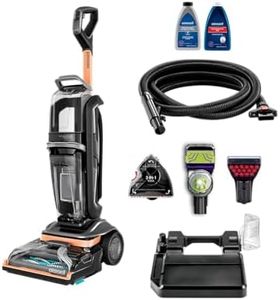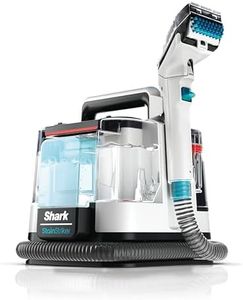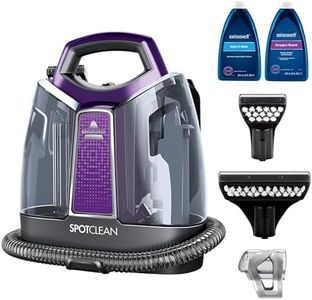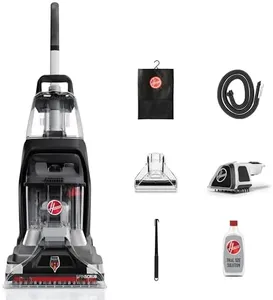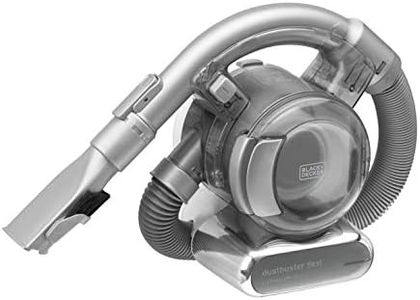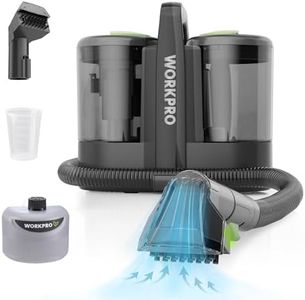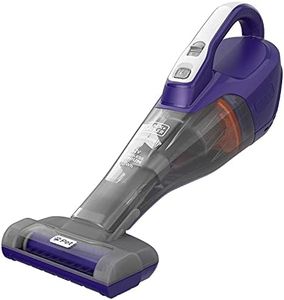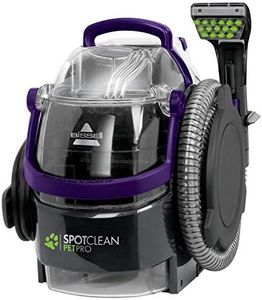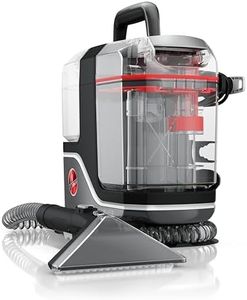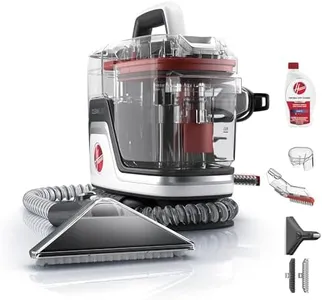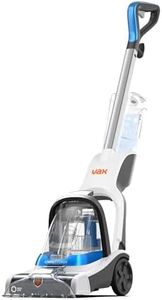We Use CookiesWe use cookies to enhance the security, performance,
functionality and for analytical and promotional activities. By continuing to browse this site you
are agreeing to our privacy policy
10 Best Handheld Carpet Cleaners
From leading brands and best sellers available on the web.Buying Guide for the Best Handheld Carpet Cleaners
Choosing the right handheld carpet cleaner can make a big difference in how easy and effective it is to keep your carpets, rugs, and upholstery clean. These devices are compact and convenient for tackling spots, spills, and stains where a full-size cleaner would be too bulky or unnecessary. The key is to match the cleaner's capabilities to the types of messes you deal with and the areas you need to reach. By understanding the most important specifications, you can find a model that fits your lifestyle and cleaning needs.Tank CapacityTank capacity refers to how much cleaning solution and dirty water the handheld carpet cleaner can hold. Larger tanks mean you can clean bigger areas or more spots before needing to refill or empty the unit, but they also add to the weight you’ll be carrying. For quick spot treatments and small areas, a smaller tank is often sufficient and makes the device lighter and easier to handle. If you frequently deal with larger messes or multiple stains at once, a bigger tank can save time and effort. Think about the typical size of your cleaning tasks and your comfort with carrying a heavier device when deciding on tank capacity.
Weight and PortabilityThis specification tells you how heavy and manageable the cleaner is when you use it. Lighter, more compact cleaners are easier to carry around the house, up stairs, and use for longer periods without getting tired. Heavier units may offer more suction or larger tanks, but can be awkward for prolonged spot cleaning. If you have limited mobility, need to clean above-floor areas, or want something for quick grab-and-go use, prioritize lighter and more portable models.
Corded vs. CordlessSome handheld carpet cleaners plug into a power outlet, while others run on batteries. Corded models never run out of power and generally have stronger suction, but their range is limited by the cord length—so you may need to switch outlets as you move around. Cordless cleaners offer greater freedom of movement and are handier for cars or stairs, but their battery life limits how long you can clean at once. If you plan on tackling lots of small messes or areas far from outlets, cordless may suit you best. For deeper or longer cleaning sessions, a corded model could work better.
Suction PowerSuction power determines how effectively the cleaner removes dirt, spills, and cleaning solutions from your carpet. More powerful suction generally means better cleaning performance, especially for set-in stains or thicker carpets. However, increased power can also make the machine noisier and heavier. Strong suction is essential if you often deal with tough, deep stains or high-traffic areas, while less powerful units may be perfectly fine for lighter, surface-level messes.
Brush Type and AttachmentsThe brush type and included attachments impact how well the cleaner scrubs stains and adapts to different surfaces. Some cleaners feature rotating or motorized brushes for deeper cleaning, while others rely on stationary brushes. Additional nozzles or specialized tools can help you tackle crevices, stairs, or upholstery more effectively. If you want versatility for various surfaces and stain types, look for models with an assortment of attachments and brush options. For basic spot cleaning, a simple unit with a standard brush may be all you need.
Ease of Cleaning and MaintenanceAfter cleaning your carpets, you'll need to clean the machine itself—especially the water tanks, nozzles, and brushes. Some models have tanks that lift out easily and are dishwasher-safe, while others may be more fiddly. If you want to spend as little time as possible on upkeep, look for features like wide tank openings, rinse-assist, or tool-free disassembly. If you’re cleaning up after pets or heavy spills, easy maintenance can make the process much less hassle.

